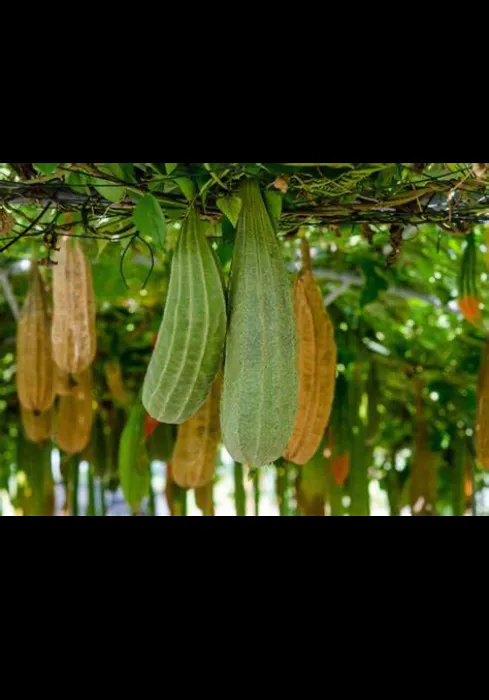Growing, Harvesting and Crafting with Loofah Sponges

Disclosure: Some of the links in this article may be affiliate links, which can provide compensation to me at no cost to you if you decide to purchase.
The loofah sponge, also known as luffa, not only serves as an excellent natural exfoliant and cleaning tool but also opens the door to a world of exciting craft projects. Unlike synthetic sponges, loofah sponges are eco-friendly and biodegradable, making them perfect for various DIY creations.
In this blog post, we'll explore how to grow and harvest loofah sponges, and then dive into some fun craft ideas that will unleash your creativity and provide you with unique, handmade items.
What is a Loofah Sponge?
Before we embark on our crafty journey, let's quickly recap what a loofah sponge is. The loofah, also known as luffa or sponge gourd, is a member of the Cucurbitaceae family, which includes gourds, cucumbers, melons, and pumpkins. Its matured fruit contains fibrous tissue that, when dried, becomes the familiar loofah sponge we all know and love.
How to Grow Loofah Sponges
Growing loofah sponges in your own garden is a gratifying experience. Here's a quick overview of the process:
1. **Climate and Soil Requirements**:
Loofahs thrive in warm, sunny climates and prefer well-draining soil with a pH range of 6.0 to 6.8 in
zones 3-9.
2. **Starting Seeds**:
Begin by planting loofah seeds indoors, approximately 6-8 weeks before the last expected frost date. They have about 120 days to harvest, so if you live in a Zone with shorter summers, start them indoors. Use biodegradable pots or peat pellets to avoid disturbing the plant's sensitive roots during transplantation.
3. **Transplanting**:
Once the frost danger has passed, transplant the loofah seedlings outdoors, providing a trellis or support for the vines to climb.
cattle panel trellis for luffa to grow
4. **Watering and Care**:
Regular watering is crucial, especially during dry spells. Mulch around the plants to retain moisture and suppress weeds.
5. **Fertilization**:
Apply organic fertilizer monthly to promote healthy growth and fruit development.
6. **Pest and Disease Management**:
Loofah plants are generally resilient against pests and diseases but remain vigilant for potential issues like aphids and cucumber beetles.
7. **Harvesting**:
Loofah sponges are ready for harvest in about 120 days, when they turn brown and feel lightweight. If you shake it and hear the seeds moving around, then its time to take it off the vine. Cut the loofah fruit from the vine, leaving a small portion of the stem attached.
**Preparing Loofah Sponges **
1. **Peeling and Cleaning**:
Once harvested, you can dry them out for a few days and then just peel them. If they don't easily peel, soak the loofahs in warm water for a few hours to soften them. This makes it easier to peel away the outer skin and remove any remaining seeds. After peeling, rinse the loofahs thoroughly to eliminate any sap or debris.
2. **Bleaching Process**:
For those who prefer a whiter appearance for their loofah sponges, a simple bleaching step can be added. Mix one part bleach with 4 parts water and soak the cleaned loofahs in this solution for about 15-20 minutes. This can help achieve a lighter color.
3. **Rinsing and Drying**:
After the bleaching process, rinse the loofahs thoroughly with clean water to remove any traces of bleach. Hang the loofahs in a well-ventilated area to dry completely. Ensure they are fully dry to prevent mold formation.
By following these steps, you'll have beautifully prepared loofah sponges that are ready to be used for your DIY projects and daily routines.
**Fun Craft Projects with Loofah Sponges**
1. **Loofah Soap Bars**:
Create your own exfoliating loofah soap bars by cutting slices of the dried loofah sponge and embedding them into homemade or store-bought soap molds. The result is a delightful soap that not only cleanses but also gently exfoliates the skin.
Learn here how to make Loofah Soap
2. *Loofah Plant Holders**:
Slice the dried loofah horizontally to create unique and natural plant holders. Place small potted plants inside these loofah rings to add an organic touch to your home décor.
3. **Loofah Bath Pouf**:
Fold a piece of dried loofah in half and stitch the open sides together to make your own bath pouf. These homemade loofah poufs work wonders when paired with your favorite shower gel.
Cut small pieces of the dried loofah and stitch them together to make reusable kitchen scrubbers. These eco-friendly scrubbers are perfect for tackling tough stains on dishes and kitchen surfaces.
5. **Loofah Art Stamps**:
Get creative by carving fun shapes or designs into slices of the dried loofah. Dip them in paint and use them as stamps to create unique artwork and patterns on paper or fabric.
Loofah sponges not only bring joy to our daily routines but also provide endless opportunities for crafting. From exfoliating soap bars to plant holders and bath poufs, these natural wonders can transform into versatile and eco-friendly creations. By growing and utilizing loofah sponges in your craft projects, you not only contribute to sustainability but also add a personal touch to your handmade items. So, unleash your creativity and embark on a journey of discovery with loofah sponges as your artistic companions!
Happy growing and crafting!
More Great Articles:
How to Sharpen and Maintain Hand Pruners:
https://inthegardensue.com/blog/how-to-sharpen-and-maintain-felco-hand-pruners
Flower Power: Enhance your well being with Indoor Blooms
https://inthegardensue.com/blog/flower-power-enhance-your-well-being-with-indoor-blooms
The Best Hand Pruners for Arthritic Hands: A Review
https://inthegardensue.com/blog/the-best-hand-pruners-for-arthritic-hands-a-review
Review of the 5 Best Garden Stools for Seniors
https://inthegardensue.com/blog/review-of-the--5-best-garden-stools-for-seniors
Outdoor Plants that are Toxic to Pets: A Complete Guide
https://inthegardensue.com/blog/outdoor-plants-that-are-toxic-to-pets-a-complete-guide
Self Watering Pots: A Guide to Choosing the Perfect One
https://inthegardensue.com/blog/self-watering-pots-a-guide-to-choosing-the-perfect-one
Disclosure: Some of the links in this article may be affiliate links, which can provide compensation to me at no cost to you if you decide to purchase.





